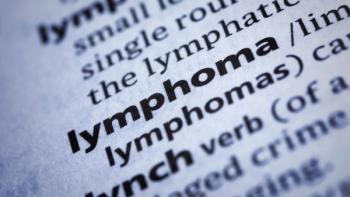
Chemo Alone May Be Optimal for Some HER2-Positive Breast Cancer Patients
Research presented at the 2014 San Antonio Breast Cancer Symposium shows that high levels of lymphocytes, white blood cells found in the immune system, could help identify women with HER2-positive breast cancer who could forego chemotherapy.
Research presented at the 2014 San Antonio Breast Cancer Symposium shows that high levels of lymphocytes, white blood cells found in the immune system, could help identify women with HER2-positive breast cancer who could forego chemotherapy.
According to a subset analysis in the phase 3 N9831 trial, researchers found that among patients who were treated with chemotherapy alone, women who had high levels of stromal tumor-infiltrating lymphocytes (S-TILs) had an 80 percent lower likelihood of disease recurrence compared with those with lower TIL counts. The study also uncovered that there was not a similar association between higher S-TIL levels and improved outcomes among patients in N9831 who received standard care with Herceptin (trastuzumab) plus chemotherapy.
Taken together, the findings suggest higher TIL levels may be a biomarker used to identify patients for whom optimal treatment might be chemotherapy alone, sparing the patient from HER2-targeted treatment, suggested Edith Perez, who presented the data at the meeting.
“The message here is that for the patients whose tumors are highly infiltrated with lymphocytes, we cannot prove that there is a benefit to using chemotherapy plus trastuzumab, at least based on the trend that we observed in this study,” said Perez, deputy director at large for the Mayo Clinic Cancer Center. She cautioned, however, that she is not yet recommending changing clinical practice.
“We need to do additional studies to corroborate our findings. I would not change the standard of care today,” Perez said. Previous research has suggested a prognostic value for TILs in triple-negative breast cancer. A study published earlier this year also reported that higher S-TIL levels were linked to a greater Herceptin benefit among a subset of 209 patients with HER2-positive breast cancer from the FinHER trial. The N9831 subset analysis reported at SABCS is the largest analysis to date of the prognostic and predictive value of S-TILs in breast cancer, noted Perez.
The pivotal, three-arm N9831 trial demonstrated improved clinical outcomes when adding Herceptin sequentially or concurrently to chemotherapy in women with non-metastatic HER2-positive breast cancer. The subset analysis that Perez reported included samples from primary tumors of patients enrolled in two of the three N9831 arms: the chemotherapy alone cohort (doxorubicin and cyclophosphamide, followed by paclitaxel) and the concurrent Herceptin cohort (doxorubicin and cyclophosphamide followed by concurrent paclitaxel plus Herceptin, and then Herceptin monotherapy). Using international consensus guidelines, S-TILs were examined for 489 patients from the chemotherapy-alone group and 456 patients from the concurrent Herceptin group.
Patients with at least 60 percent S-TIL counts were considered to have high levels (at least 60 percent of cells in the tumor sample were immune cells). Overall, 94 patients met the high S-TIL criterion, including 48 patients in the chemotherapy-alone cohort and 46 patients in the Herceptin/chemotherapy group.
At a median follow-up of 6.9 years, higher S-TIL levels in the chemotherapy-alone group were associated with a significant recurrence-free survival (RFS) benefit. The RFS 10-year projections in this cohort for patients with high and low S-TIL levels were 90.9 percent and 64.3 percent, respectively.
“A high level of tumor lymphocytic infiltration was predictive of a benefit with chemotherapy,” Perez said. In the cohort that received Herceptin, there was not a link between higher S-TIL levels and improved RFS at the 6.9 year follow-up. Ten-year RFS estimates for high and low S-TIL patients in this cohort were 80 percent and 79.6 percent, respectively.
Perez said she was “surprised” that the Herceptin results varied from the smaller FinHER analysis and offered possible explanations for the disparity. “The FinHER study utilized Herceptin for only nine weeks. [It was also] a very small study—they only had 49 total events and it was very limited in terms of statistical power,” she said. Conversely, the N9831 analysis had many more patients and a longer follow-up.
As a separate component of their research, Perez’s group also compared the treatment arms head-to-head by S-TIL status. Among patients with high S-TIL levels, there was not a significant trend toward improved RFS in patients receiving chemotherapy alone versus combination therapy with Herceptin. In patients with low S-TIL levels, there was a significant RFS benefit for patients receiving standard of care with Herceptin versus chemotherapy alone. Going forward, Perez and her colleagues hope to conduct a similar analysis in another cohort of patients and analyze immune cell subtypes to examine whether improved outcomes are related to a specific subtype.
Perez said she would ultimately like to examine whether patient outcomes could be improved by changing the amount and type of S-TILs.
“It would be fascinating to see if can change the milieu of the tumor to see if we can modify sensitivity to treatments,” she said. The Breast Cancer Research Foundation and 26.2 With Donna Foundation supported the study’s research.




